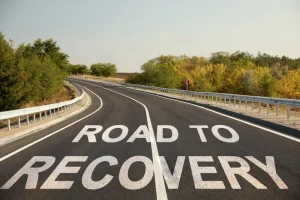
In treatment, patients learn to identify any high-risk situations and the warning signs of relapse, and create relapse prevention plans they can apply to dangerous situations, triggers and other life stressors. Patients are also taught the disease model of addiction, which states that addiction is both chronic and progressive. In other words, it’s a lifetime diagnosis, so patients have to carefully maintain their recovery using different coping skills, support networks and self-care routines. By using those important techniques, people in recovery will adeptly maneuver any threat of relapse. There are lots of factors that harm reduction activists believe reduce addiction and overdose, including having multiple paths to recovery, using medications to support treatment, regulating prescription drugs, reducing stigma, and strengthening insurance parity. Most importantly, we need to move away from a punishing, criminal justice approach to addiction and toward one based on public health.
Relapse after inpatient substance use treatment: A prospective cohort study among users of illicit substances
Smartphone technology has resulted in remote breathalyzer programs in which an individual can provide a sample into a Bluetooth-connected breathalyzer while the mobile phone takes a picture to confirm their identity. Disulfiram is a medication alcohol relapse statistics that inhibits aldehyde dehydrogenase resulting in the build-up of acetaldehyde, which produces uncomfortable physical effects. As a result, disulfiram acts as a deterrent against an alcohol relapse until the body metabolizes the medications.

The Consequences of Drug Abuse
- Similarly, substance abusers report significantly higher levels of drug-related and drug cue–related craving and attentional bias than healthy controls [21–24].
- Some of these include drugs that were once common prescriptions, such as Laudanaum.
- However, at this time, breathalyzers are only able to detect alcohol, so they may not provide deterrence against relapse on other substances unless combined with random urine drug screens.
- By using those important techniques, people in recovery will adeptly maneuver any threat of relapse.
Rates of alcohol use generally go up with income and educational attainment. The death rates due to alcohol consumption per litre of alcohol consumed are highest in low-income countries and lowest in high-income countries. Addiction to alcohol can have negative consequences, affecting every aspect of your https://ecosoberhouse.com/article/how-to-taper-off-alcohol/ life including work, school, and relationships. Fortunately, with treatment, you can end your addiction to alcohol and live a high quality of life in recovery. Inquire about the qualifications of staff members as well as the specifics of the therapies offered prior to committing to a particular program.
Relapse Prevention Strategies
- Most Schedule IV drugs are prescription medications, some of which have been banned by the Food and Drug Administration.
- Similarly, some studies suggest a relapse rate for opioids as high as 80 to 95 percent during the first year after treatment.
- The investigator would like to express special thanks and sincerity to the University of Rwanda, School of Public Health for providing this golden opportunity to conduct the research study.
- But the study wasn’t a controlled experiment designed to prove whether or how semaglutide might directly prevent alcohol misuse.
- An additional predictor of relapse at 6 months was shorter number of days of abstinence prior to treatment entry.
Date of relapse and level of alcohol consumption post-treatment was acquired from records, when possible. Chronic abuse of substances also results in greater incentive salience such that there is an increased “wanting” of drug, particularly in stress- and drug-related contexts [16]. Thus, acute stress exposure in the laboratory increases drug craving and anxiety in individuals dependent on opiates, alcohol, nicotine, cocaine, and marijuana [17, 18••, 19••, 20].
The process of relapse starts weeks and even months before you consume alcohol or ingest drugs into your system.3 Relapse occurs in three stages that include emotional, mental, and physical. Because addiction can affect so many aspects of a person’s life, treatment should address the needs of the whole person to be successful. Counselors may select from a menu of services that meet the specific medical, mental, social, occupational, family, and legal needs of their patients to help in their recovery. Addressing the nation’s mental health crisis and drug overdose epidemic are core pillars of the Biden-Harris Administration’s Unity Agenda for the nation. These investments enabled the expansion of lifesaving prevention, treatment and recovery services and supports in communities throughout the country.

They offer a wealth of information on bath salt rehab options and resources. Awareness alone can be a powerful tool against these psychological phenomena. By identifying and naming what is happening, you will have a better chance to resist the temptations they create. My favorite tool is keeping Sobriety Gratitude Logs, which I share in my free Monthly Sober Curious Magazine. It will help you focus on the positive aspects of sobriety and counterbalance the distorted memories of drinking.
